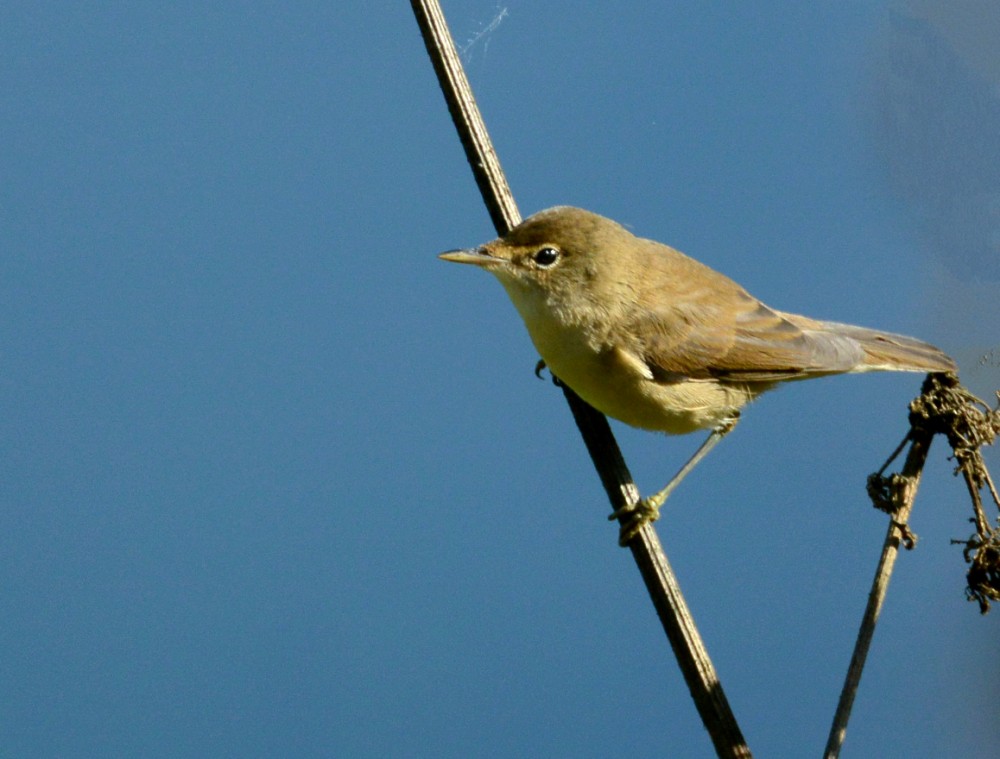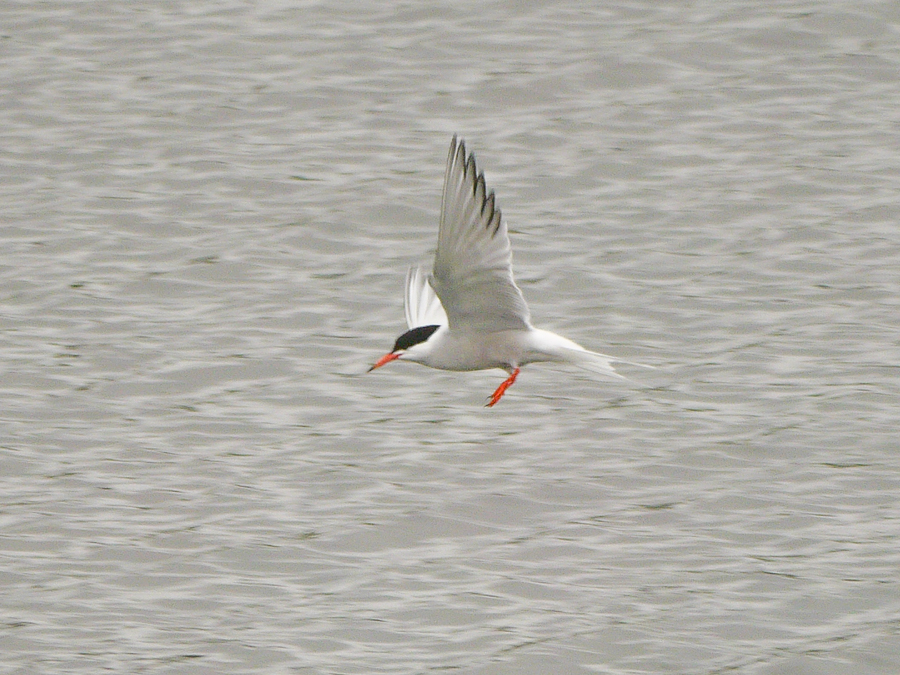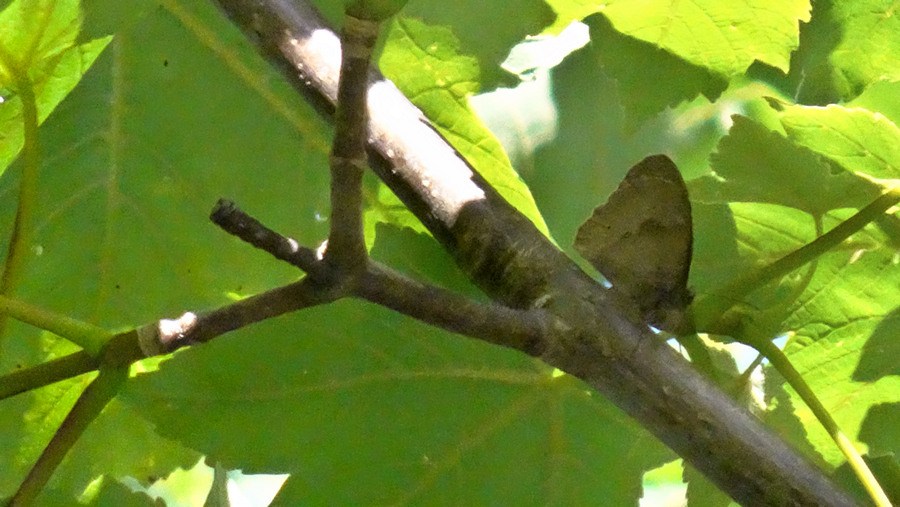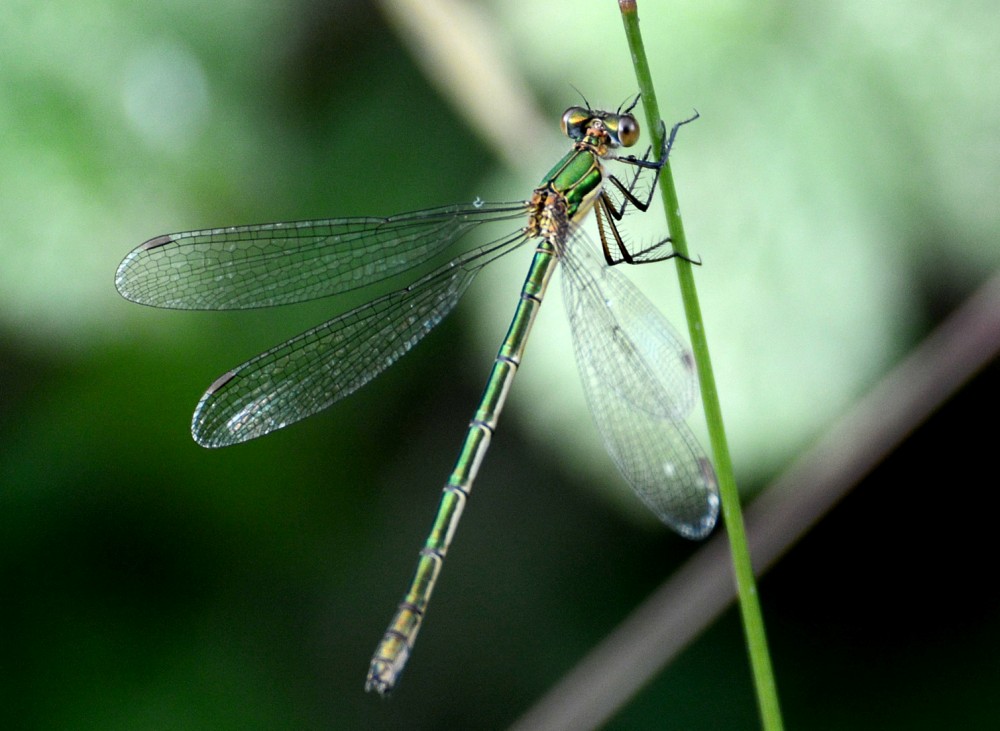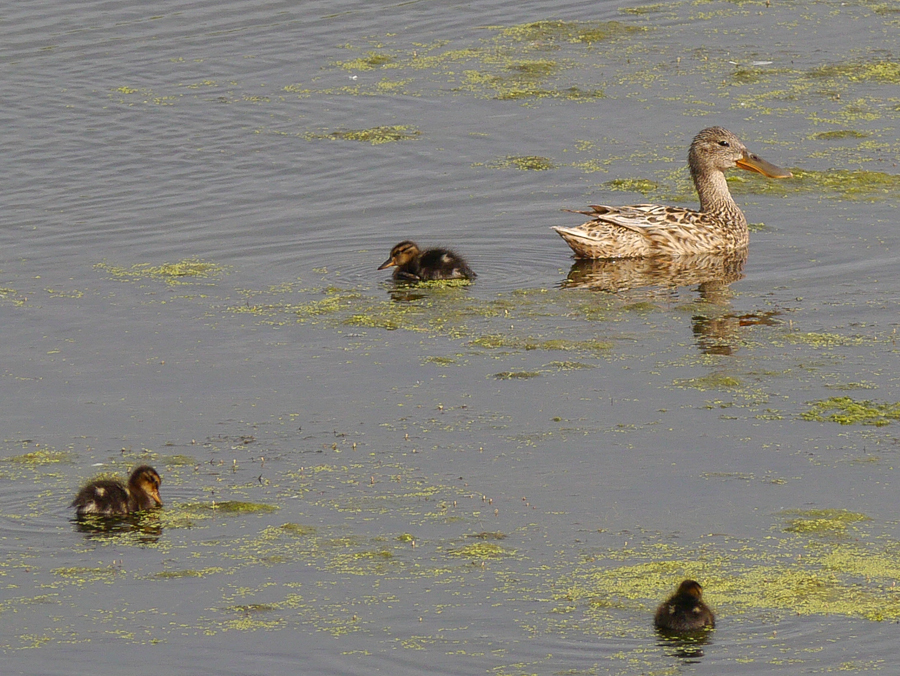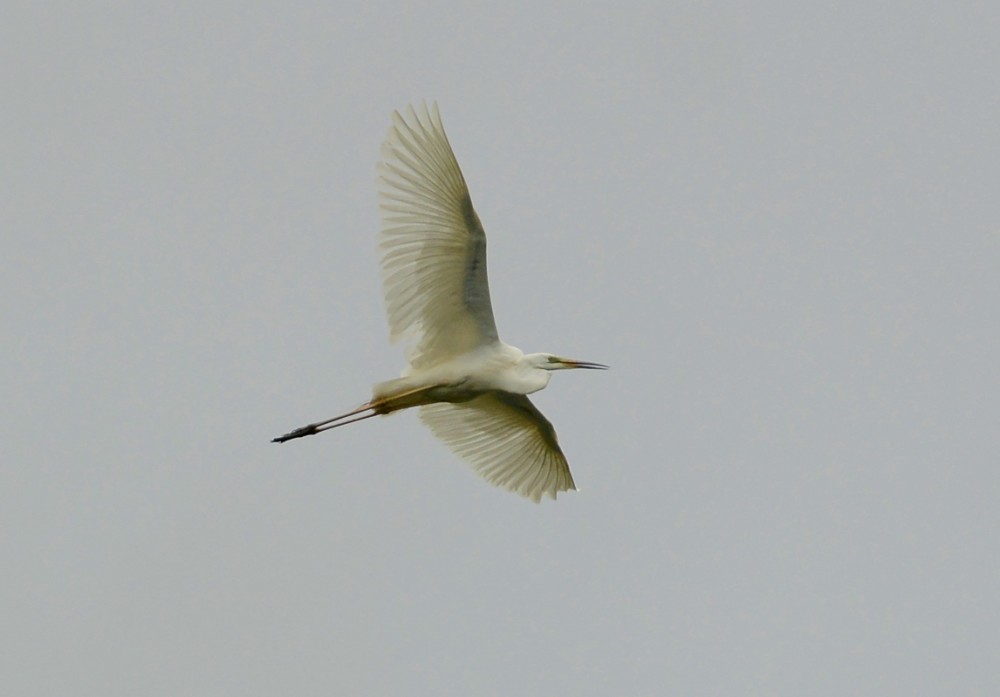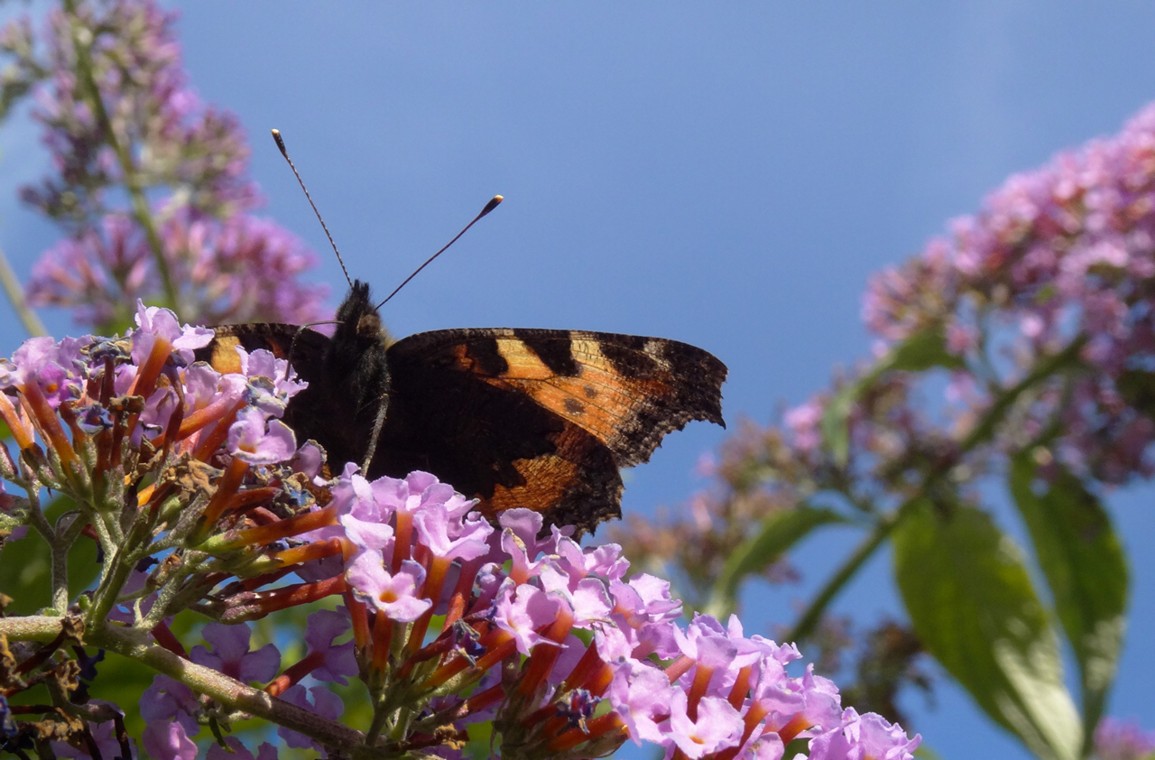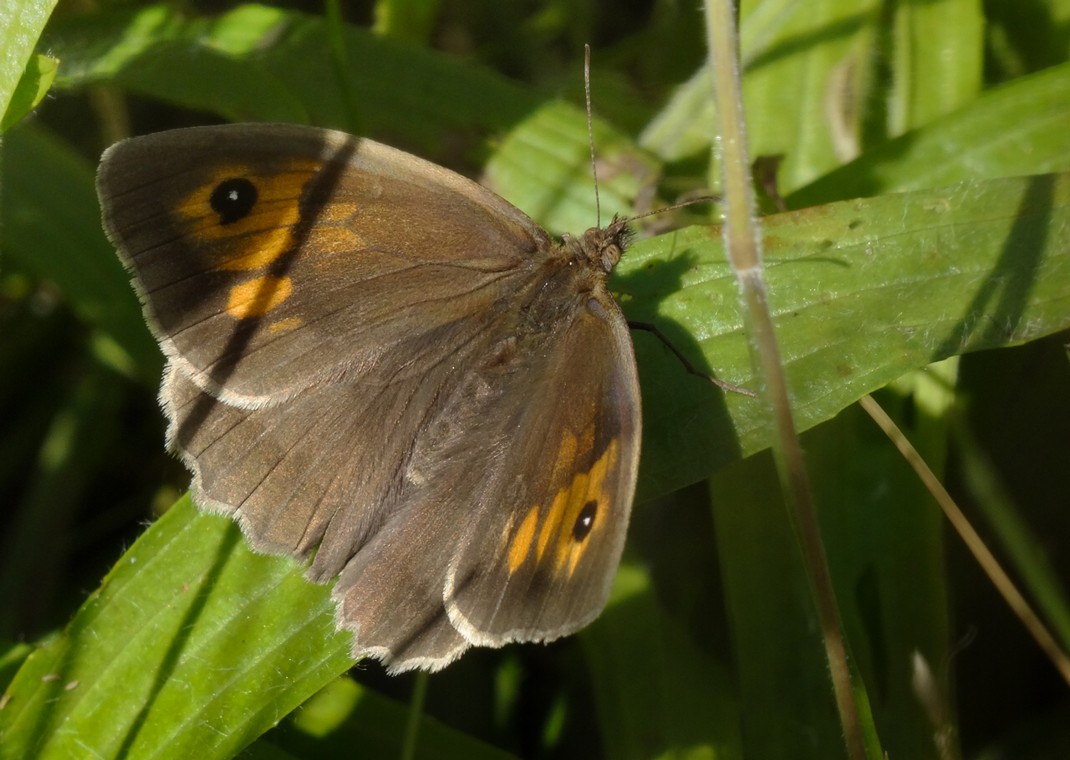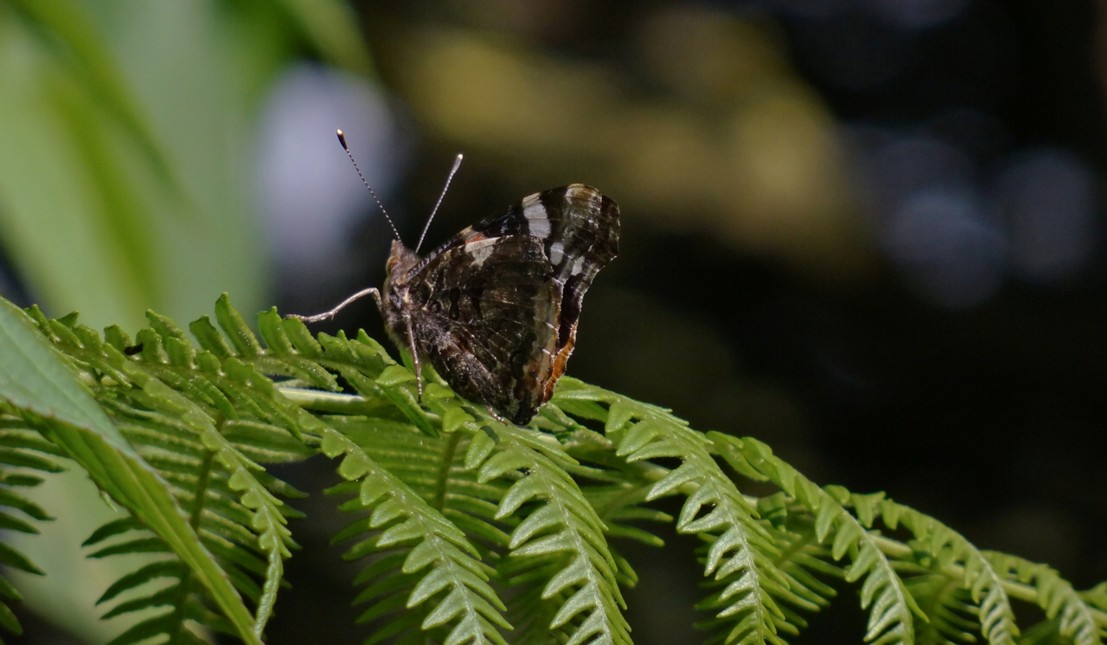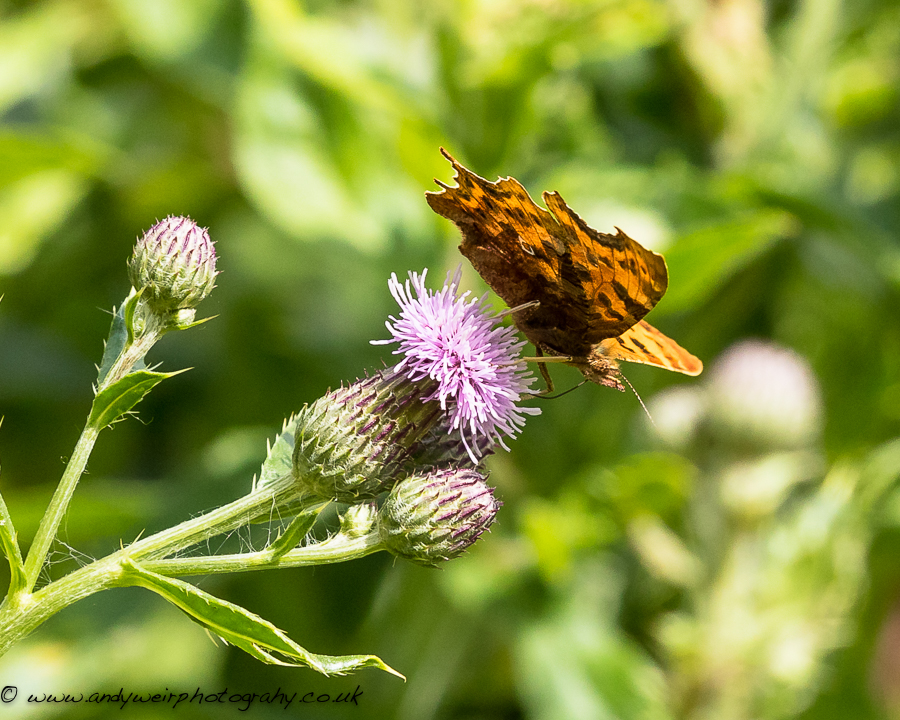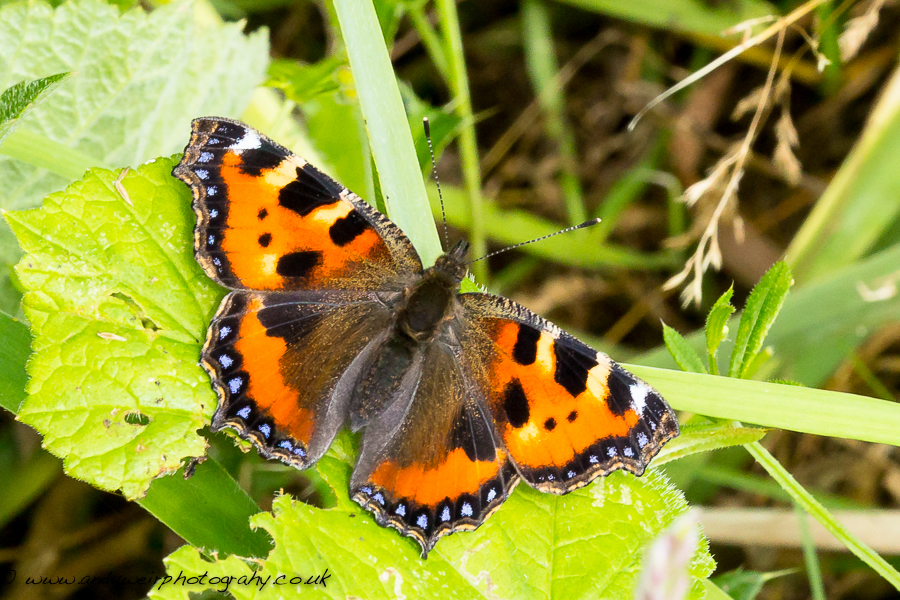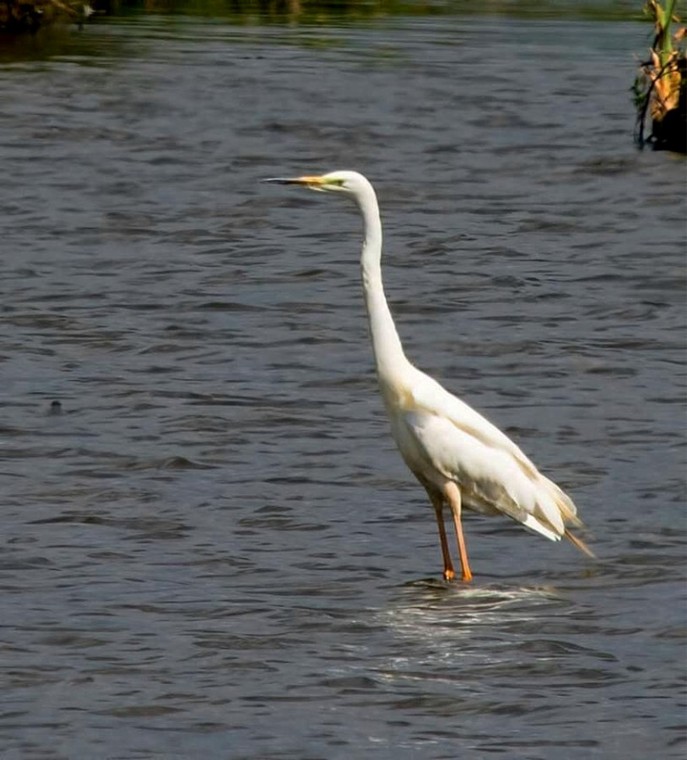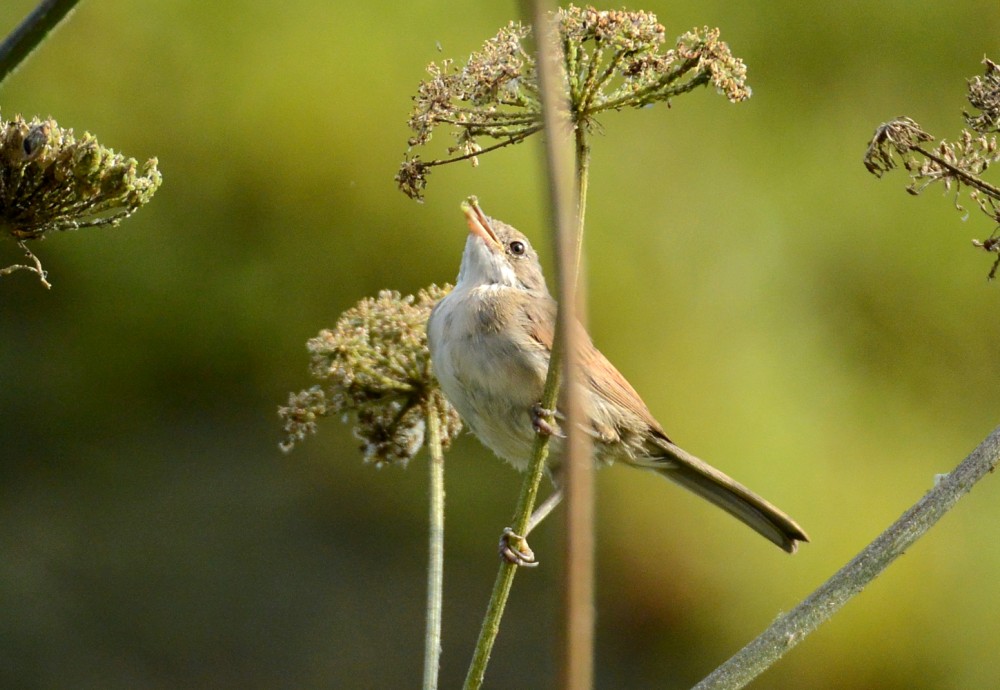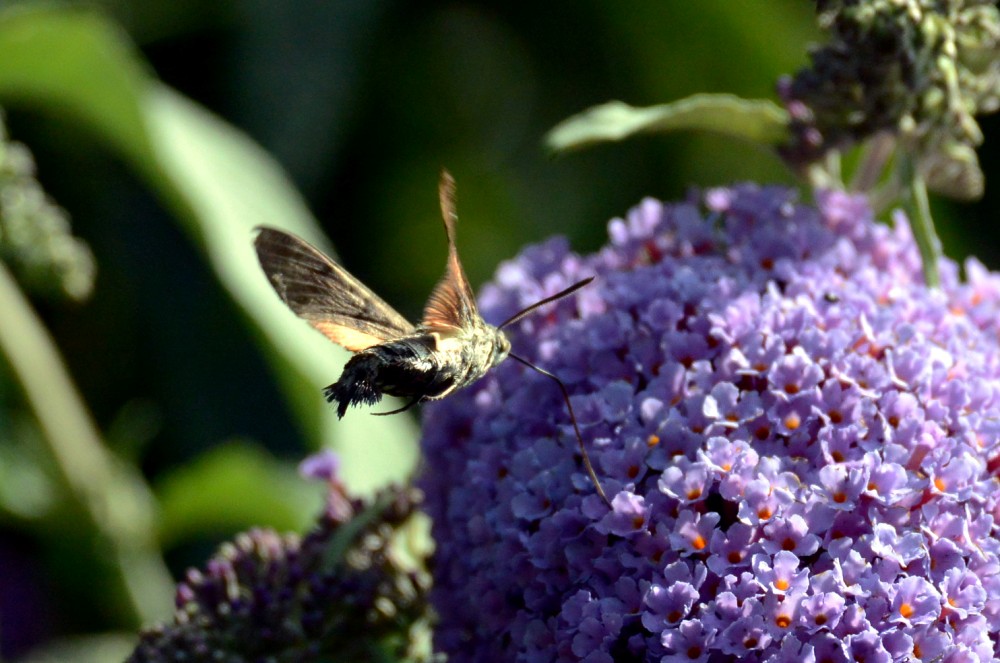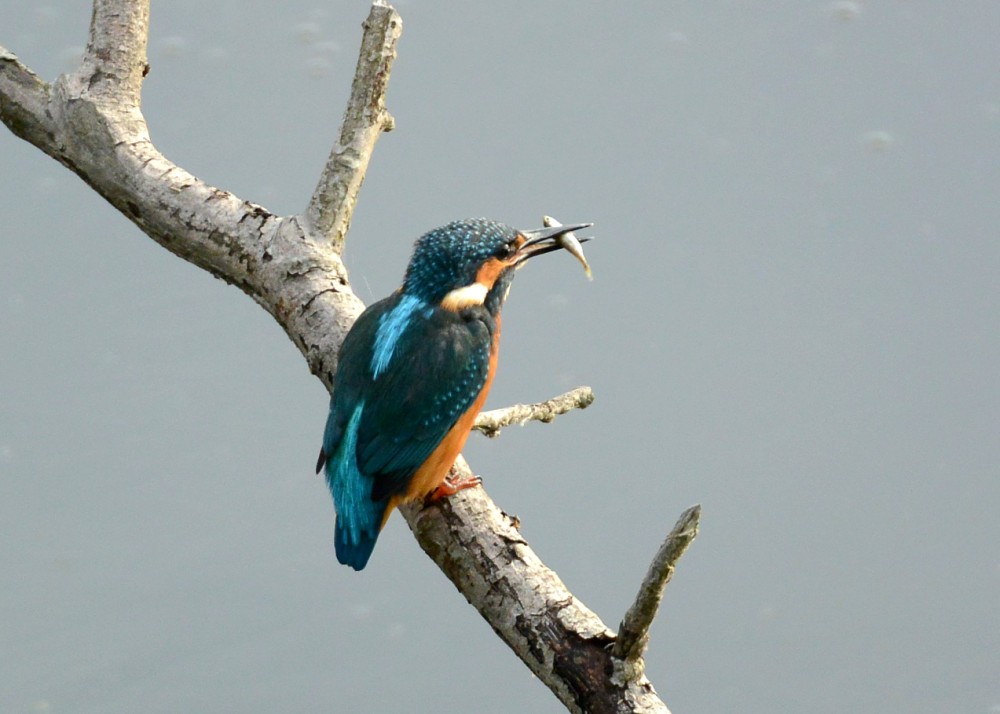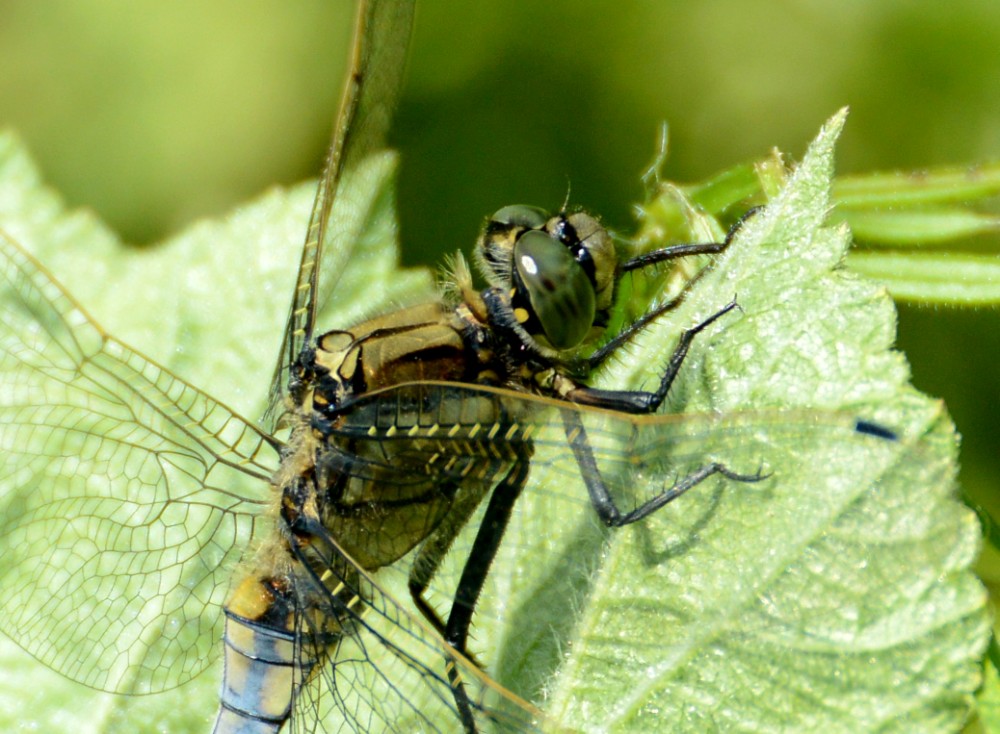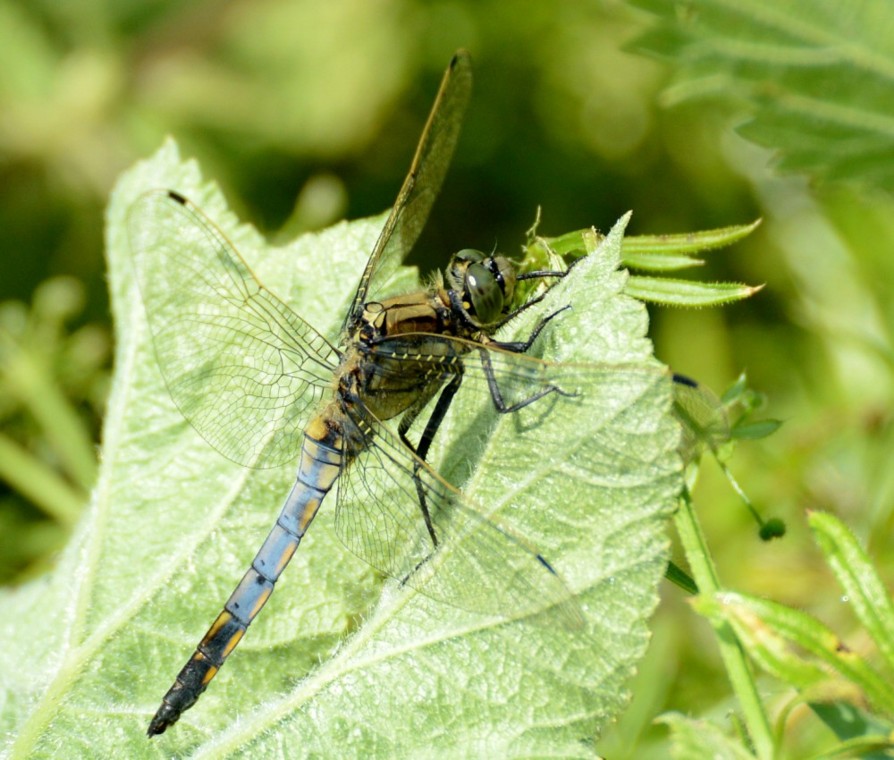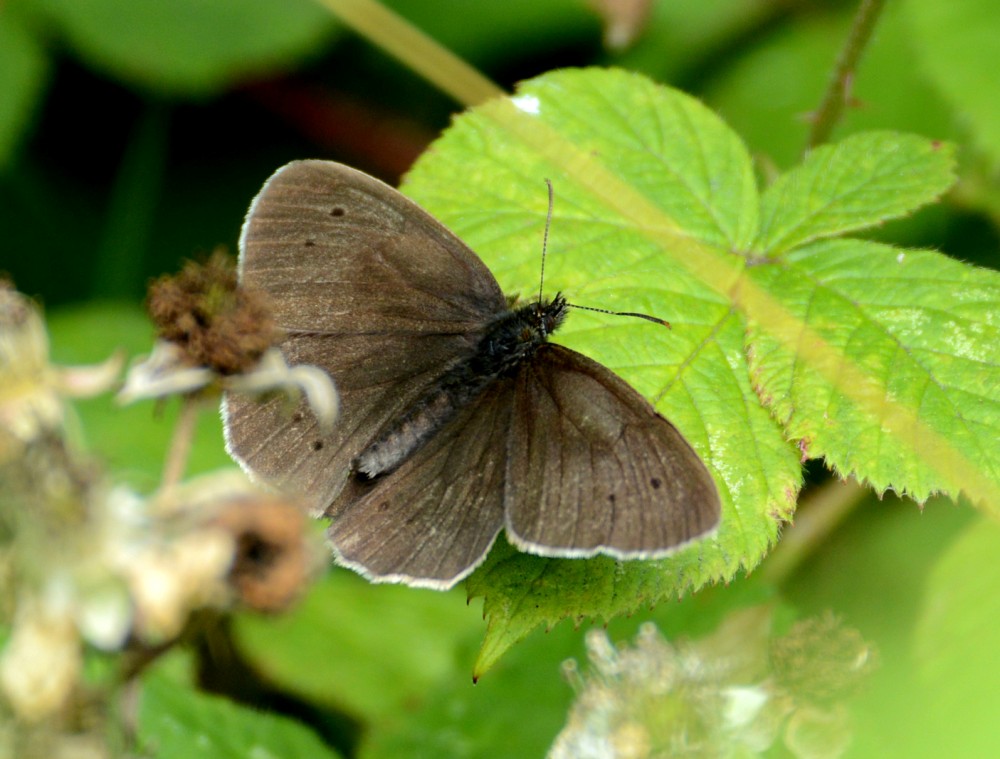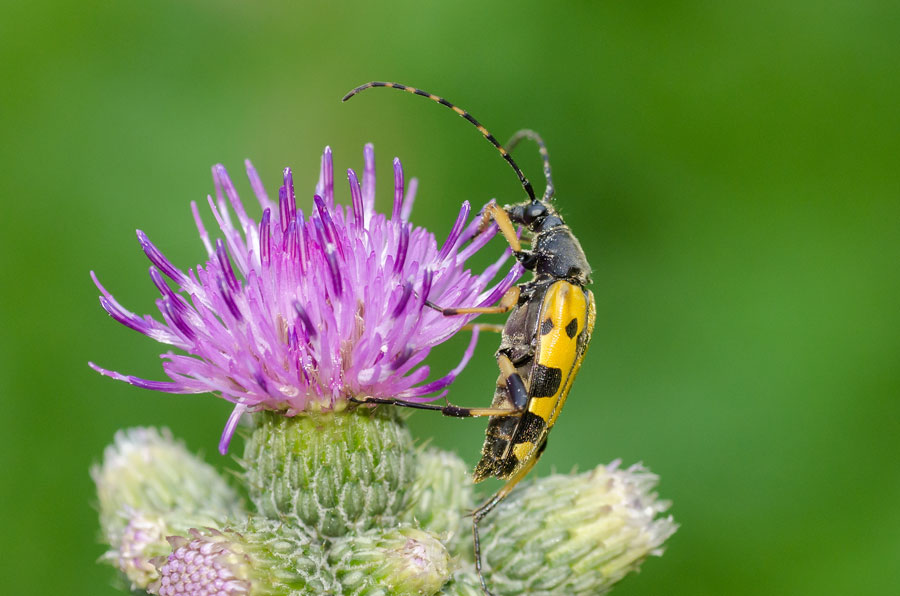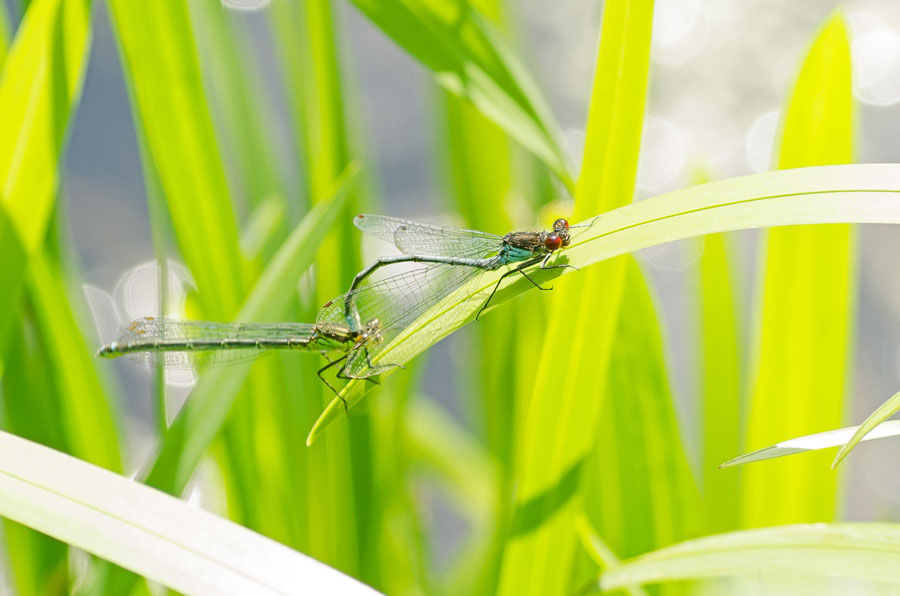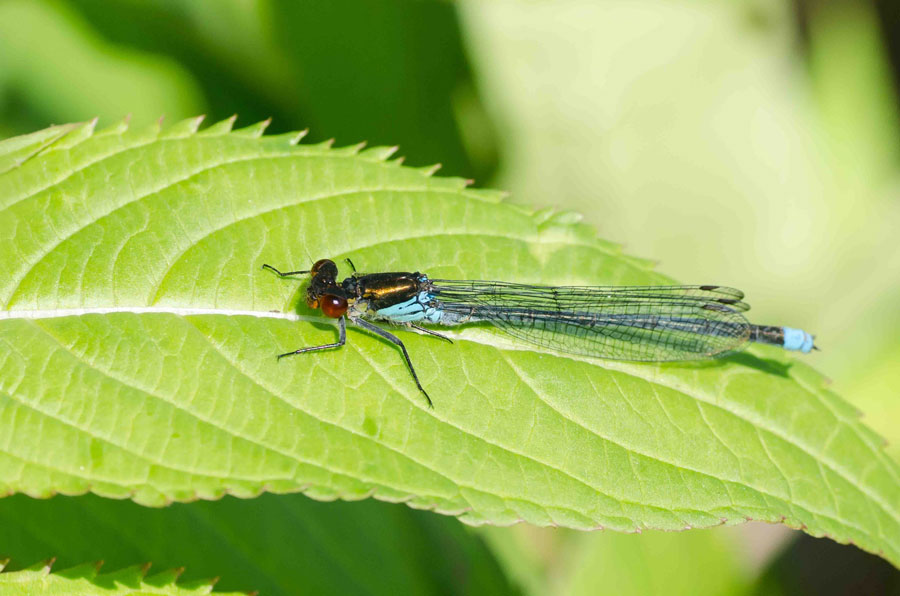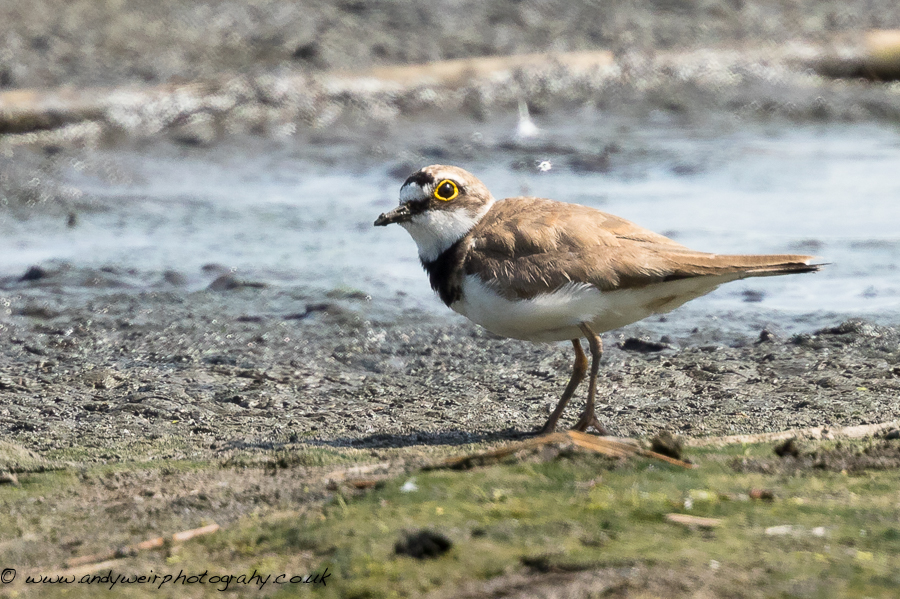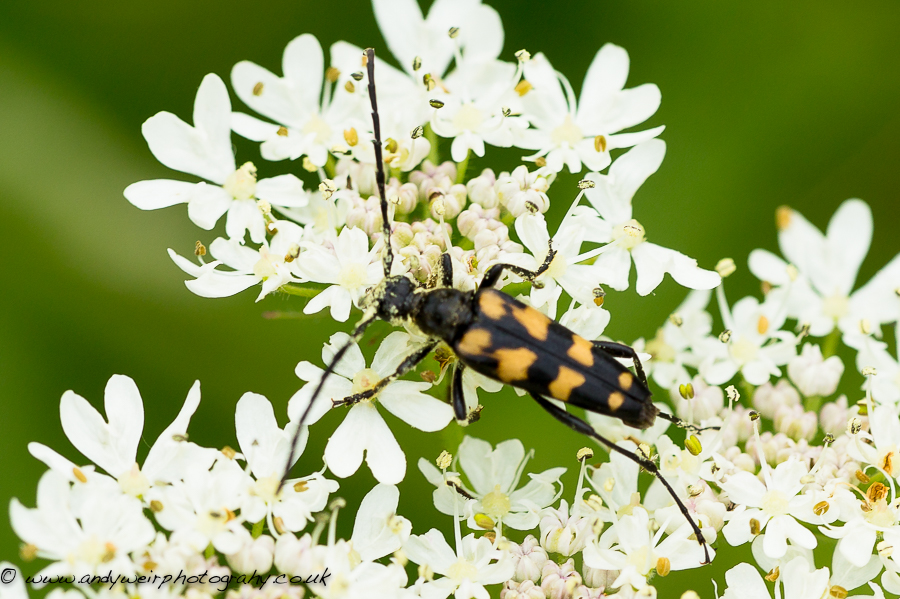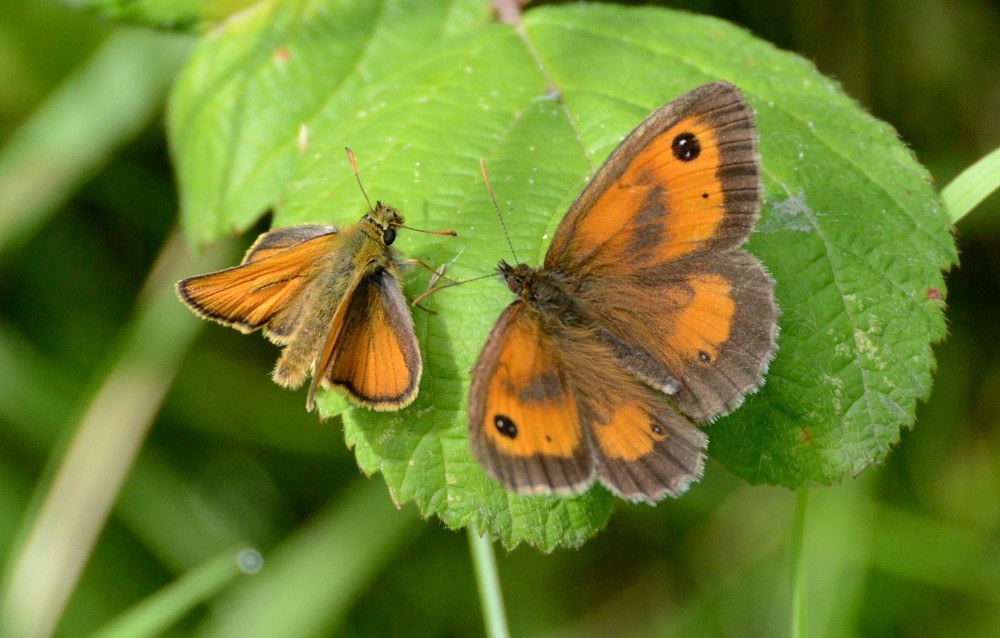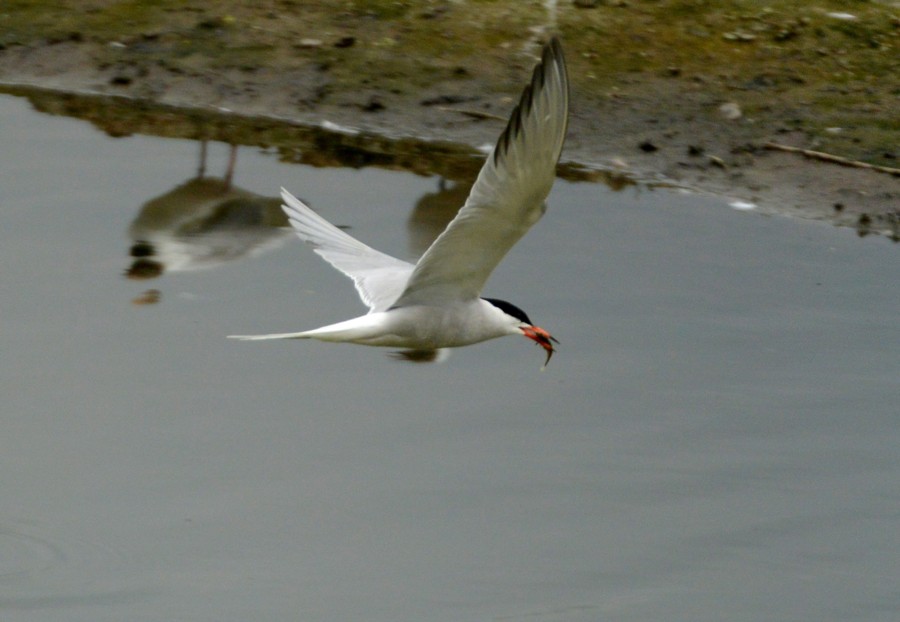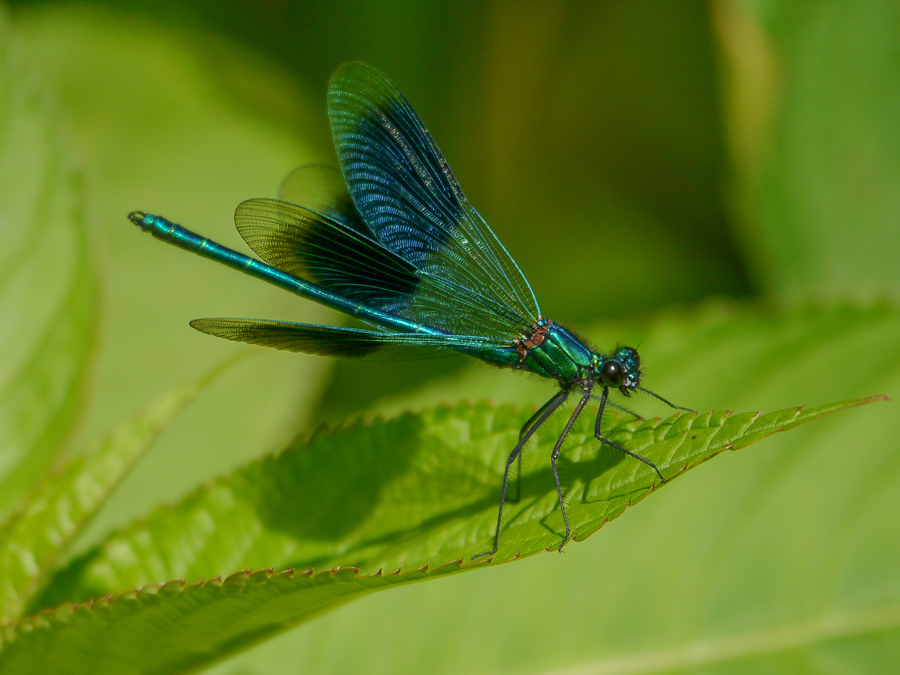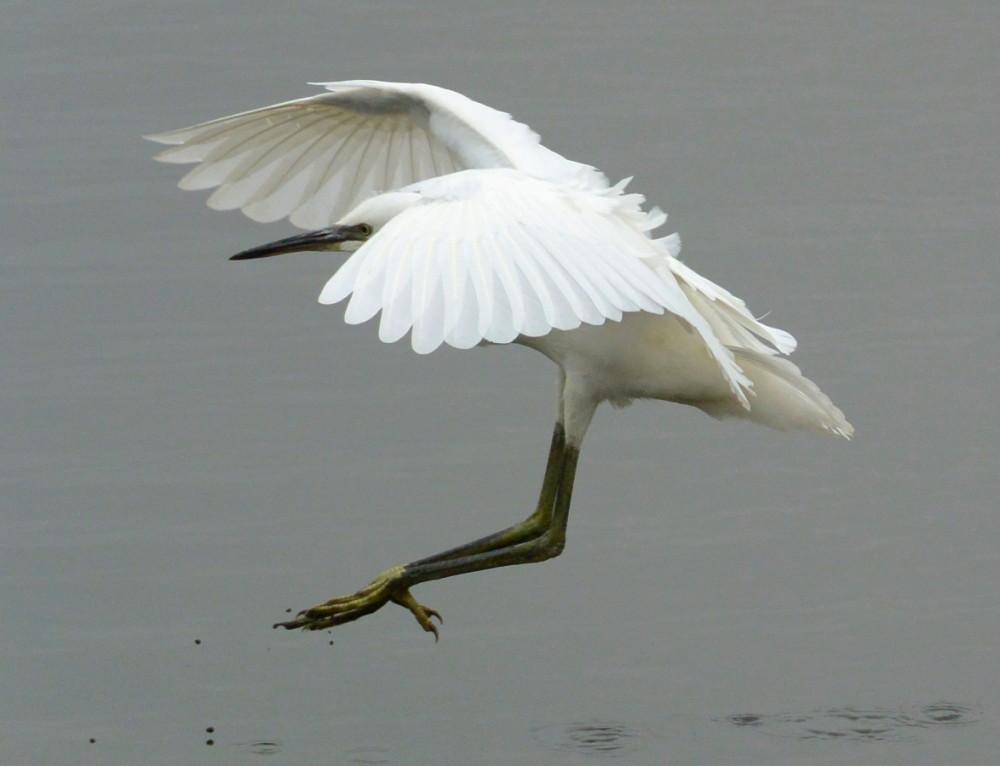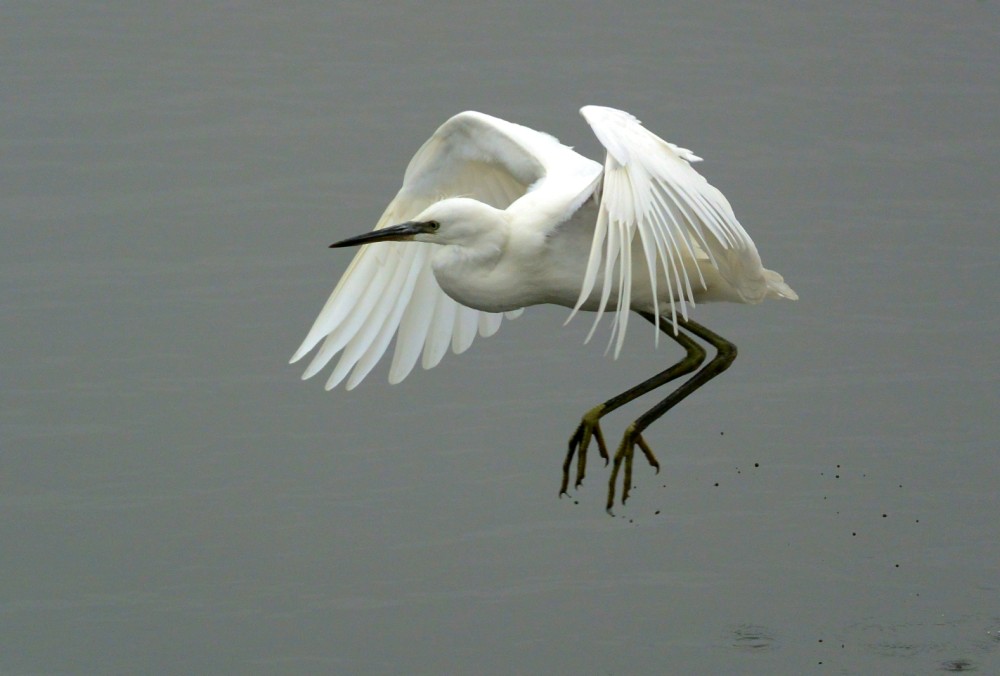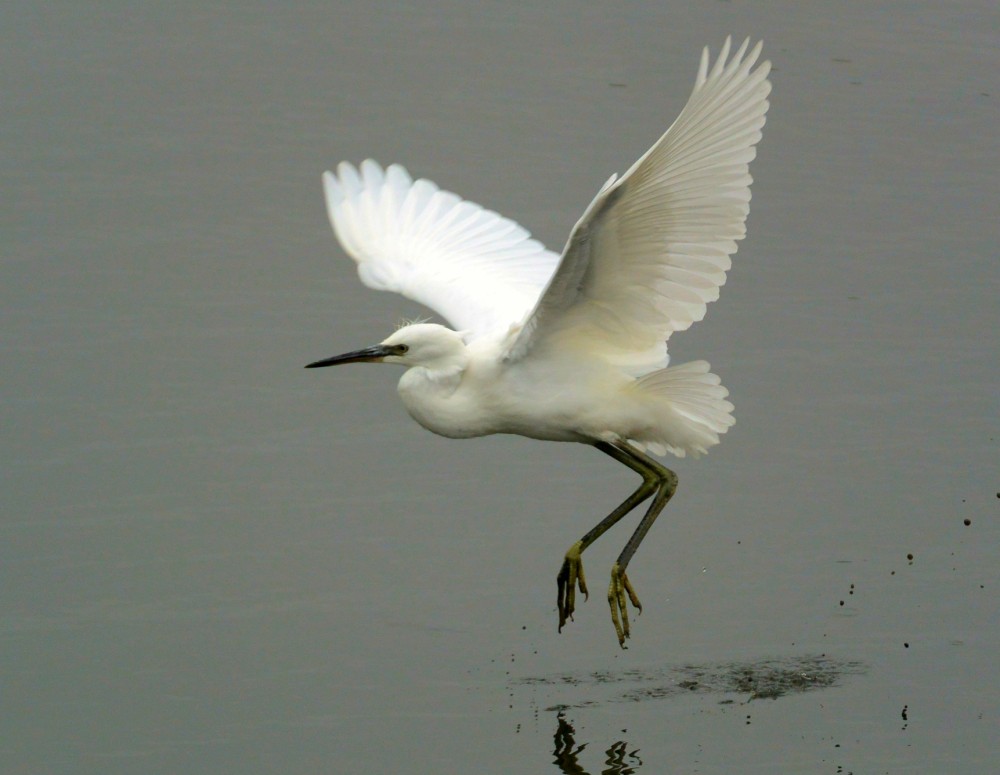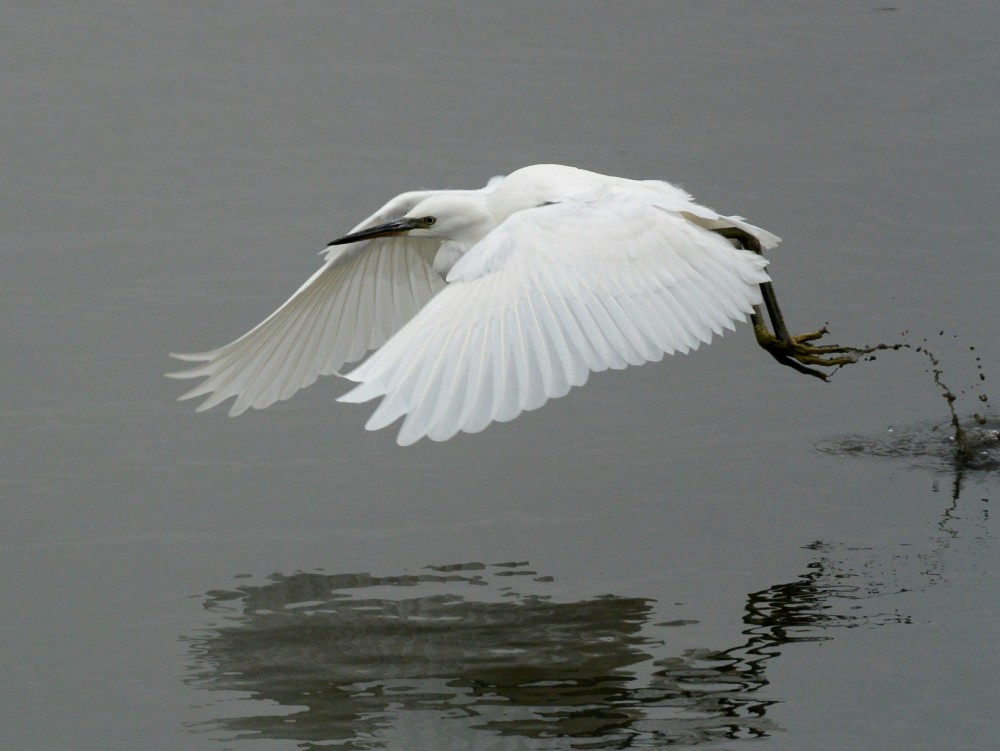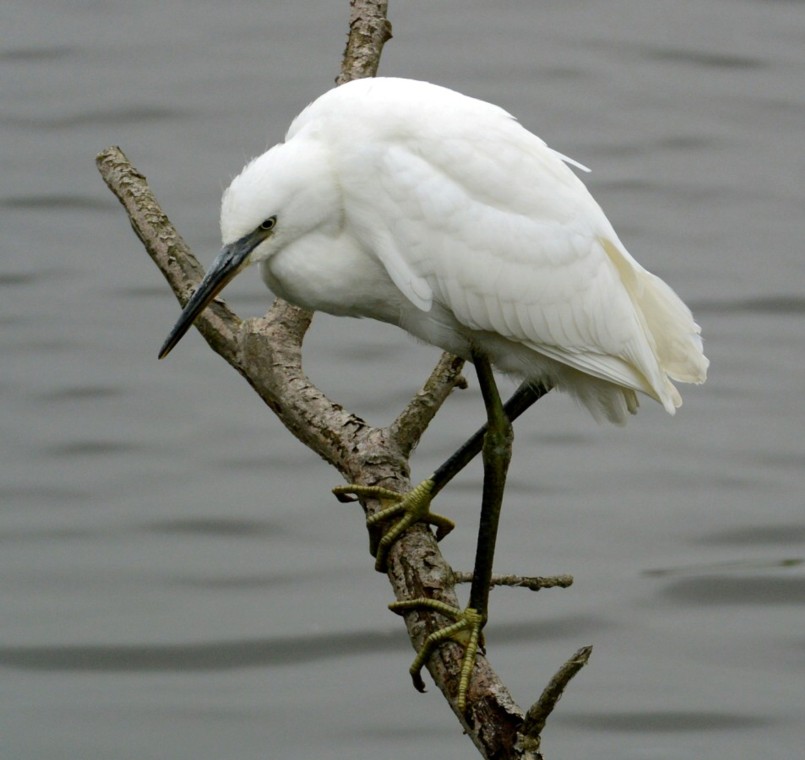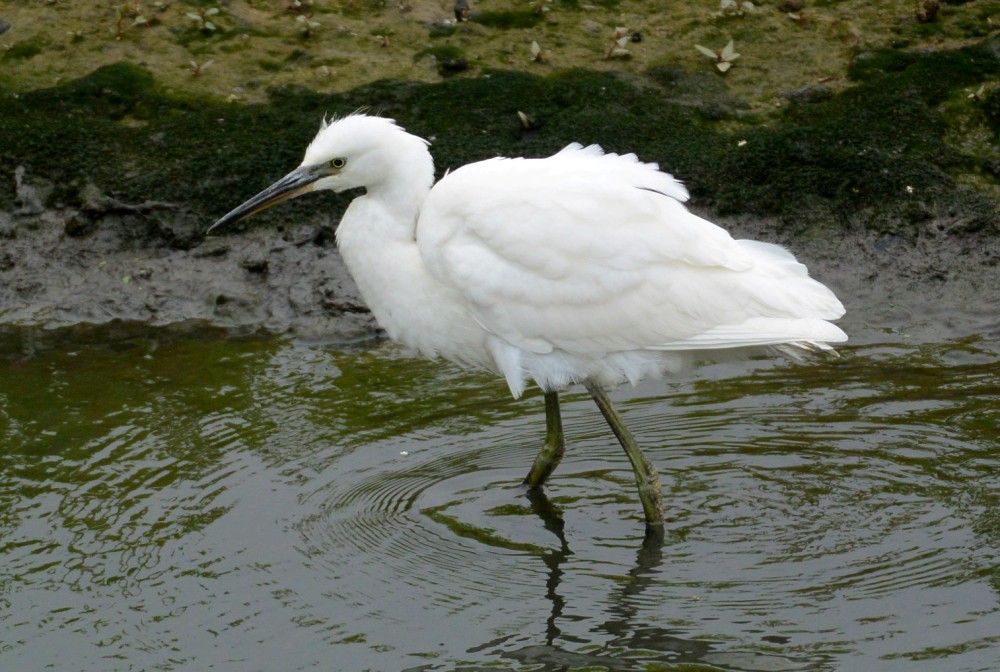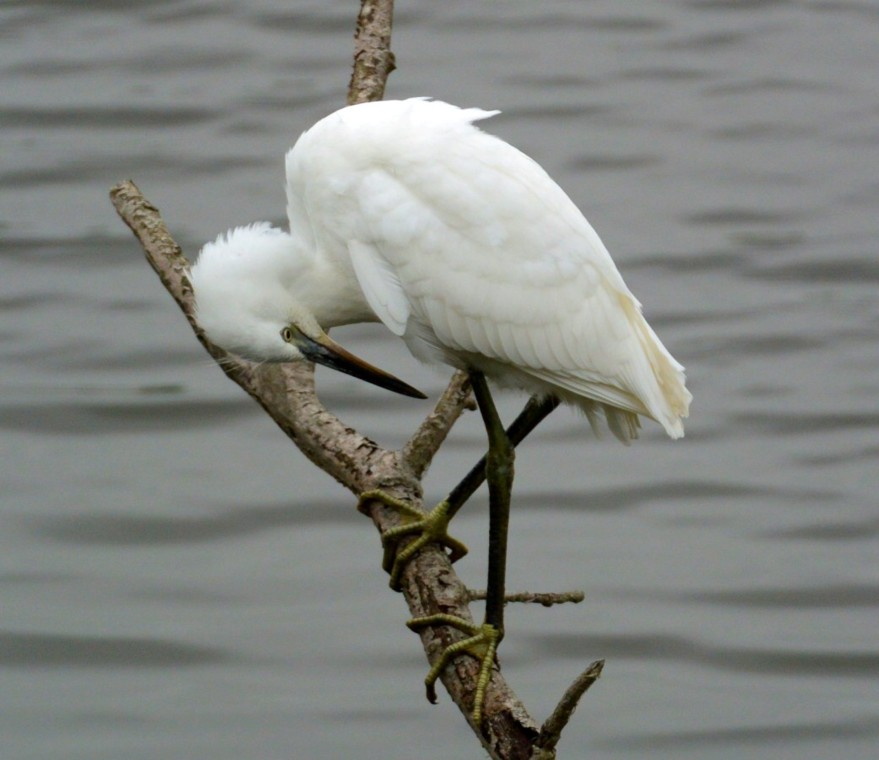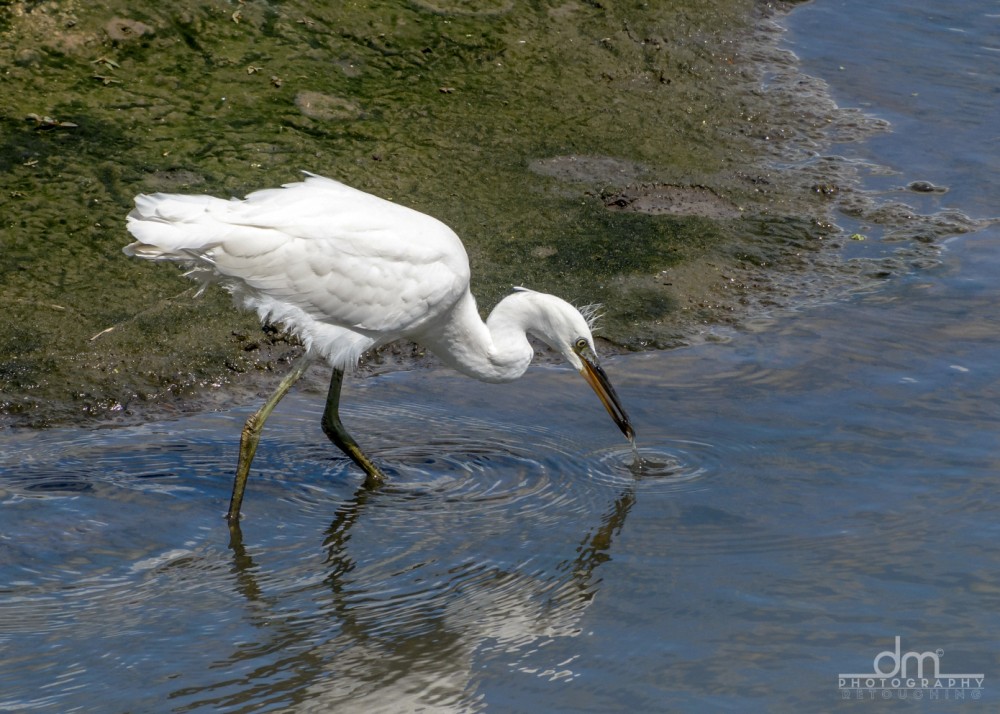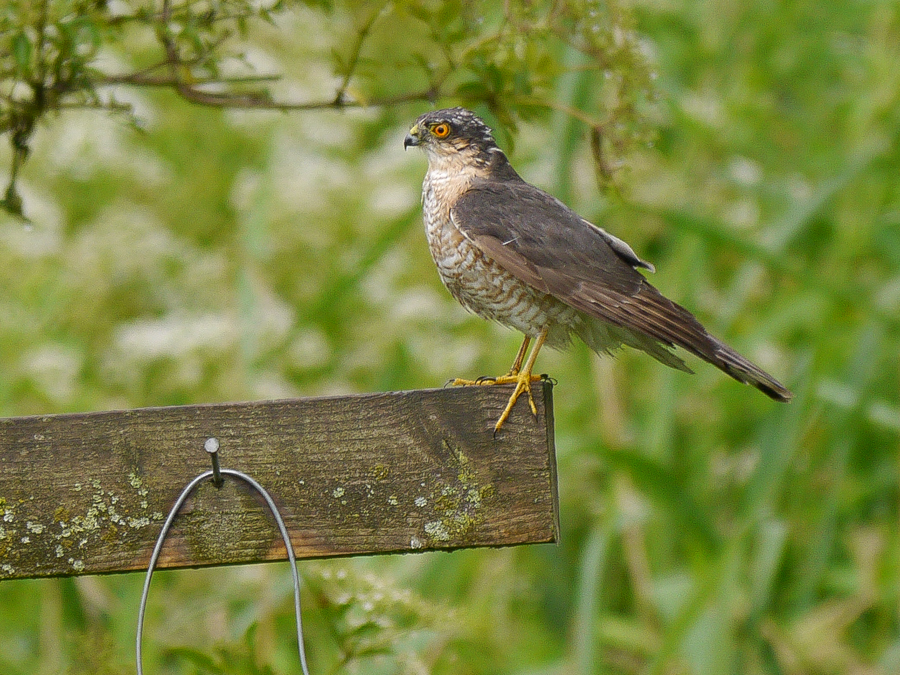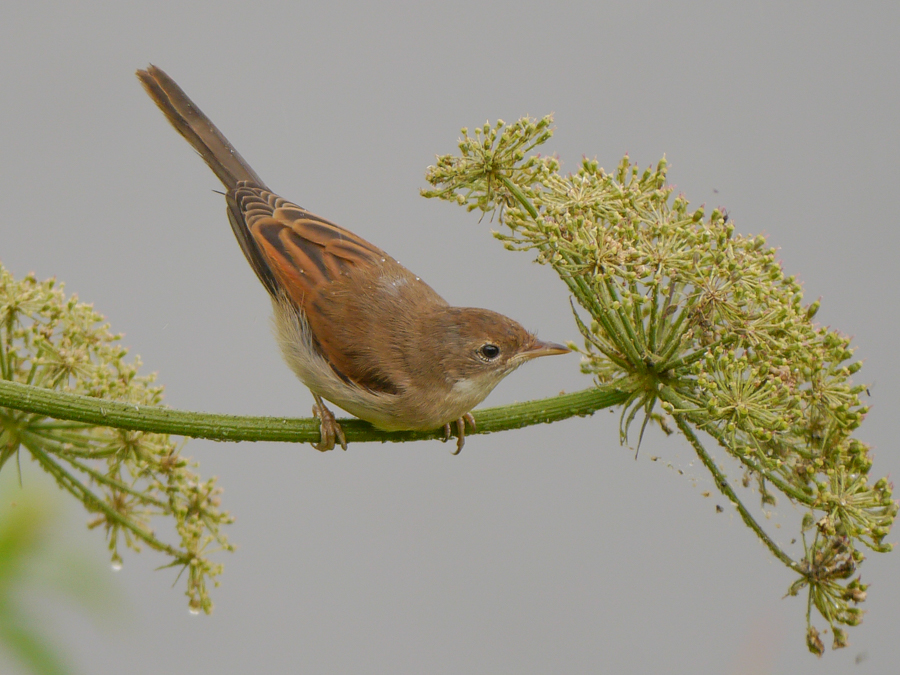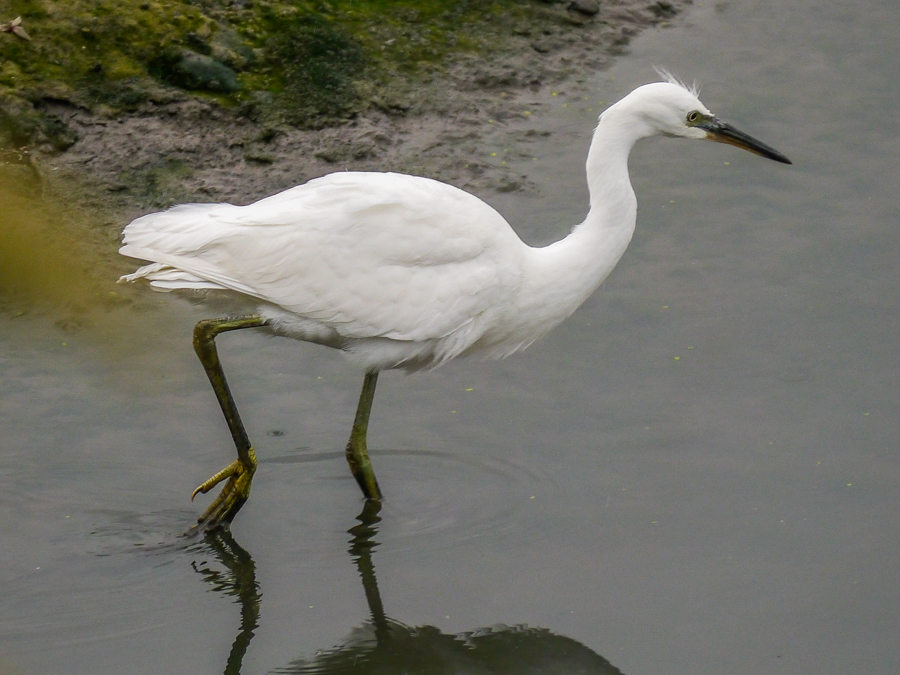Woolston Eyes Monthly Sightings
2015-07-31
Spotted at least one more Hairstreak Butterfly last night, most likely purple, and in the same spot, in the maple trees. There are oak trees nearby as well. No3 Bed.
Video link of them in flight below. https://www.youtube.com/watch?v=ndNRB-k12X4
Submitted by: David Waterhouse
2015-07-31
Before and after welcoming another party of volunteers to do some balsam pulling, David Spencer and I had an enjoyable couple of hours on No.3 bed. Good birds included: 1 Little Egret, 4 Green Sandpipers, 1 Common Sandpiper, 3 Common Terns, 12 Black-tailed Godwits, 1 juvenile Black-necked Grebe and 1 Kingfisher.
Photo of a Reed Warbler
Cheers David
Submitted by: David Bowman
2015-07-27
One Common Tern, 3 Green Sandpipers and 2 Redshank this morning
Submitted by: David Spencer
2015-07-25
Purple Hairstreak Woolston Eyes No.3 bed
Click here to view David’s video and image of the Purple Hairstreak
Submitted by: David Waterhouse
2015-07-25
Whilst monitoring the butterfly transect I found a single Ringlet on the Canal Track just opposite the pallisade gates at the entrance to No.2 bed. Also a Holly Blue on the canal track about 100 yards to the west of the car park. A survey of the northern half of No.1 bed produced over 90 Gatekeeper and 57 Meadow Brown together with a few Large and Small Skippers.
Submitted by: Dave Hackett
2015-07-25
Purple Hairstreak Butterflies, No3 Bed.
Much further up the track than the previous sightings. Go Past the Sybil Hogg Hide, walk past the Buddleia bush on the right hand side, keep going for about another 15 meters or so, there is an opening that lets in lots of sunlight. I noticed what looked like a hairstreak quickly flutter along the nettles and then very rapidly up into the trees. I managed to keep my eye on it and get this photo. It moved once more, but then sat in the same spot for about an hour. David Spencer turned up and I was able to point it out to him.
I noticed at least one more hairstreak rapidly flying by whilst photographing and videoing this one, it flew toward the trees even further up the track. So 2 sightings confirmed today. I noticed they were more active at about 1745-1815.
Submitted by: David Waterhouse
2015-07-25
Excellent morning, with some good birds and plenty of dragonflies and butterflies. Highlights were: 9 Black-tailed Godwits, 2 Common Terns, 2 Little Ringed Plovers, 2 Black-necked Grebes, 2 Ravens, 2 Ruddy Ducks and a family party of Sparrowhawks. Odonata included: 2 Emperors, 4 Black-tailed Skimmers, 9 Brown Hawkers, 2 Southern Hawkers, 14 Ruddy Darters (9 males), 5 Common Darters, 6 Emerald Damselflies and at least 40 Common Blue Damselflies. Butterflies included: 30 Gatekeepers, 14 Meadow Browns, 5 Commas, 2 Red Admirals, 1 Large White, 5 Speckled Woods and 2 Small Skippers.
Photo of an Emerald Damselfly
Cheers David (with David Spencer, Alan Warford, Paul Hazlehurst, Brian Baird, Diane Shepherd, George Dunbar and Les Jones)
Submitted by: David Bowman
2015-07-22
Just after I posted the negative news for the Great White Egret, Kieran Foster has reported it again this evening from the Tower Hide.
Submitted by: David Spencer
2015-07-22
No sign of the Great White Egret today but other reports included the Otter from the Frank Linley hide briefly at c1:30, Greenshank, 2 Common Tern, Green Sandpiper and 3 Snipe. Photograph of 3 of the Shoveler brood
Submitted by: David Spencer
2015-07-21
First Visit to the Hide on No4 Bed this evening. A Lovely Quiet spot. Spotted what looked to be the Great White Egret, and also the Female Shoveler with chicks. Photo only has 7, but there are 8 chicks.
Submitted by: David Waterhouse
2015-07-21
A really good morning, starting with a jaunt to get the Red-footed Falcon in Staffordshire (with Black Redstart in the same field) Then a dash back to Nos.3 and 4 beds, to catch up with Great White Egret, with 1 Little Egret, 1 Black-necked Grebe, 2 Little Ringed Plovers, 4 Green Sandpipers and 2 Ruddy Ducks for good measure. Earlier in the morning, 3 Common Terns also passed through (per Bert Lloyd and John Verdon).
The Great White Egret was re-located on the Loop of No.4 bed at 1.30 pm but the flew onto No.3 bed. See photo
Cheers David (with Alan Warford, Paul Hazlehurst, Brian Baird, Diane Shepherd and George Dunbar)
Submitted by: David Bowman
2015-07-20
An evening visit and my first search for Purple Hairstreaks this year. In spite of the rather blustery conditions I found a single butterfly at about 7 p.m. which was flying very actively in the oak trees just to the west of the Sybil Hogg Hide. On No.3 bed Gadwall numbers were less than recently at around 300 whilst Coot totalled between 90 and 100. 26 lapwing were on the scrape and about 100 Starlings flew in, presumably to roost. On leaving the bed a juvenile Great Spotted Woodpecker was perched on the footbridge calling loudly and the resident pair of Grey Wagtails were at Latchford Locks. Although breeding has certainly been attempted there I have not seen any young.
Submitted by: Dave Hackett
2015-07-20
The Great White Egret was on the loop of No.4 bed again this morning. It then flew towards No.3 bed but has not been relocated. On No.3 bed there were 3 Green Sandpipers and John Langley saw 2 Common Sandpipers and 2 Snipe.
Submitted by: David Spencer
2015-07-19
Loop of No.4 bed. Highlight was a brood of 8 tiny young Shoveler the first confirmed breeding since 2007! Also many other duck broods. Permit holders reported a Great White Egret in front of the Loop hide. This bird then moved over to No.3 bed. Unfortunately missed it on both occasions. On no.3 bed 4 Black necked grebes-2 adults and 2 full grown young on NW Pool.31 Mute Swans.
Submitted by: Brian Martin
2015-07-18
Little Ringed Plover (Charadrius dubius), taken from the John Morgan hide..
Submitted by: Andy Weir
2015-07-18
A Great White Egret turned up in front of the Tower Hide on No.3 bed at lunchtime today. Found by Karl Bishop it was confirmed and photographed by John Tymon before flying NW at 1.30 pm.
Photo by John Tymon
Cheers David
Submitted by: David Bowman
2015-07-18
During the dog days of summer the birding can get a little slow, so we entertain ourselves by wandering round doing butterfly and dragonfly counts. Today was typical, with a Green Sandpiper reported and 3 Little Ringed Plovers the only other birds of real note. Butterfly totals included: 104 Gatekeepers, 61 Meadow Browns, 9 Small Tortoiseshells, 14 Commas, 8 Small Skippers, 7 Red Admirals, 10 Small Whites, 1 Large White and 2 Speckled Woods. There were plenty of Six-spot Burnet moths, too, with 35 counted on No.1 bed. Dragonflies were abundant, particularly on No.1 bed where hundreds of Darter sp. were around the New Pool. Those identified included: 10 Brown Hawkers, 3 Southern Hawkers, 13 Black-tailed Skimmers, 4 Common Darters, 22 Ruddy Darters, 4 Emerald Damselflies, 1 Red-eyed Damselfly, 40 Common Blue Damselflies and 30 Blue-tailed Damselflies.
Picture of a Whitethroat feeding on Hogweed.
Cheers David (with Alan Warford, Brian Baird, Paul Hazlehurst, Diane Shepherd and George Dunbar)
Submitted by: David Bowman
2015-07-15
A lovely sunny day with plenty of butterflies. Reserve totals were 315 Gatekeeper,180 Meadow Brown, 27 Comma, 23 Small Skipper, 16 Small Tortoiseshell,8 Large Skipper, 5 Red Admiral, 3 Speckled Wood and 1 Painted Lady. Also of note were 2 Banded Demoiselle and 2 small Pheasant chicks on No.4 bed.
Submitted by: Dave Hackett
2015-07-16
Record shot of today’s Humming-bird Hawk-moth from No.3 bed
Cheers David
Submitted by: David Bowman
2015-07-16
Another morning with good sightings in sunny weather on No.3 bed. Prior to a session of Balsam pulling David Spencer, Brian Baird and I spent a couple of hours birding from the Morgan Hide. Two Black-necked Grebes (1 adult and 1 young), 2 Ruddy Ducks, 3 Little Ringed Plovers, 2 new broods of Tufted Duck and a Kingfisher which posed for photographs were the highlights. A second Ringlet for the bed was reported from near the Hogg Hide and a Humming-bird Hawk-moth on a Buddleia was a nice surprise as we were leaving.
Photo of the Kingfisher from this morning
Cheers David
Submitted by: David Bowman
2015-07-15
Close-up of a Black-tailed Skimmer from this morning.
Cheers David
Submitted by: David Bowman
2015-07-15
Try again! Black-tailed Skimmer from No.3 bed this morning.
Cheers David
Submitted by: David Bowman
2015-07-15
With the sun shining I decided to try and do a dragonfly survey of Nos.1 and 3 beds, while also trying to grab some dragonfly photos. Starting on No.3 bed, sightings included 2 adult Hobbies (flushed from the east bank), 2 Little Ringed Plovers, 2 Wigeon and a Redshank. Dragonfly totals for the two beds were: 25 Brown Hawkers, 16 Black-tailed Skimmers, 2 Southern Hawkers, 2 Four-spotted Chasers, 5 Emperors, scores of Darters with Ruddy Darter predominant and lots of Azure and Blue-tailed Damselflies. A single female Ringlet was also still on No.2 bed. While surveying the “New Pool” on No.1 bed the fledged juvenile Peregrine, with the adult male in train, came and stooped at me several times - brilliant!
Photo of the juvenile Peregrine from No.1 bed this morning.
Cheers David
Submitted by: David Bowman
2015-07-01
Long Horned beetle Rutpela maculata
this was taken along the footpath towards the flower meadows bed 3
Submitted by: Keith Gallie
2015-07-09
Red Eyed Damselfly Erythromma najas in the usual spot under the footbridge
Submitted by: Keith Gallie
2015-07-11
Little Ringed Plover (Charadrius dubius)taken from John Morgan Hide.
Submitted by: Andy Weir
2015-07-11
Four-banded Longhorn Beetle (Strangalia quadrifasciata) - No3 Bed
Submitted by: Andy Weir
2015-07-11
A very productive morning on No.4 bed and the Loop. On the Sandpit Pond 2 Little Grebe chicks growing well while a Buzzard may have been visiting a possible nest site. Soon after flew overhead with a long piece of vegetation trailing from its tail- looked like Goose grass. Loop was full of broods and it seems that the rapid growth of plants has kept off dog walkers and those intent on trouble.Three broods of Coot ( including one of 5 very small young), two broods of Moorhen and 2 adult Little Grebes each feeding single young of about the same age.Three broods of Tufted Duck-one of 6 tiny young,one of 6 small young and a third of 4 young ca. 3 weeks old. A female Pochard with 2 large young and a Mallard with 6 near full grown young. Giant Hogweed on islands already on way to setting seed. Fine display of Purple loosestrife on fringes of two of the islands.
Butterflies : 4 Red Admirals,2 Commas, 5 Small tortoiseshells,3 Speckled Woods.
Submitted by: Brian Martin
2015-07-11
Photo of a Gatekeeper, which was displaying to a Small Skipper on No.1 bed this morning.
Cheers David
Submitted by: David Bowman
2015-07-11
Another special morning? with some nice birds, plenty of dragonflies and a Reserve “butterfly tick” for us all. We started on No.3 bed with 2 Common Terns, 3 Green Sandpipers, 2 Ruddy Ducks, 3 Little Ringed Plovers, a close fly-by from a juvenile female Peregrine and a juvenile Black-necked Grebe. Then onto No.2 bed where efforts to locate a male Ringlet paid off, followed by another Ringlet No.1 bed. Then a dragonfly/butterfly survey of No.1 bed, with 2 more Little Ringed Plovers and 3 more Peregrines noted. Totals were: Ruddy Darter 5, Common Darter 4, Black-tailed Skimmer 3, Red-eyed Damselfly 2 (from No.3 bed), Emperor 1, Southern Hawker 2, Brown Hawker 1 (from No.3 bed), Common Blue/Azure Damselflies common, 2 Ringlets, 2 Large Skippers, 10 Small Skippers, 4 Commas, 9 Red Admirals, 8 Small Tortoiseshells, 1 Green-veined White, 2 unidentified Whites, 8 Speckled Woods, 52 Meadow Browns and 43 Gatekeepers. Then, after a lunch-break chilling out watching the Peregrines under the Viaduct it was back onto No.3 bed where the 2 Common Terns were displaying and giving hope of late breeding (which would be another Reserve first). Cheers David (with Dave Steel?, David Spencer, Alan Warford?, Paul Hazlehurst?, Brian Baird, Helen Allan? and Les Jones.)
Submitted by: David Bowman
2015-07-09
An eclipse drake Garganey was seen briefly this morning. Also present were 3 Green Sandpipers and 3 Little Ringed Plover. I looked for the Ringlet without success but did see Gatekeeper and this Banded Demoiselle.
Submitted by: David Spencer
2015-07-08
Having cut short last week’s walk due to excessive heat, today’s was curtailed as a result of the cold and damp conditions which made walking through the long wet grass on Nos 1 and 2 beds less enjoyable than usual! The British summer never ceases to amaze. In spite of the weather I briefly caught sight of the Ringlet on No.2 bed. This species often flies in cool conditions and even in light rain. The Little Egret was showing well in front of the John Morgan Hide where a Redshank was also present.
Submitted by: Dave Hackett
2015-07-08
After a meeting on No.1 bed this morning, I managed a couple of hours birding from the Morgan Hide on no.3 bed. The Little Egret, 2 Common Terns and a Redshank plus a handful of Black-necked Grebes were still present, though there was no sign of the 2 Common Sandpipers or Green Sandpiper reported by David Spencer this morning. Had an enjoyable half-hour trying to get a decent portrait of the Egret, which was taking some of the many thousands of fish fry which were evident in the channels round the scrape.
Photo of Little Egret
Cheers David
Submitted by: David Bowman
2015-07-07
Here’s David Mercer’s Little Egret photo from earlier today.
Cheers David
Submitted by: David Bowman
2015-07-07
There are thousands of small fish in the channel below the John Morgan which these grebes were feeding on.
Submitted by: David Spencer
2015-07-07
Today’s sightings included 1 Little Egret, 2 Green Sandpipers (singles from the South Screen and Rotary Hide, 2 Little Ringed Plovers and 1 Oystercatcher.
Submitted by: David Spencer
2015-07-05
Ringlet seen and photographed on No 3 yesterday morning. Site was beside the track just opposite the south meadow area. I will post a photo when the gremlins are banished from my laptop. Douglas Buchanan
Submitted by: Douglas Buchanan
2015-07-05
Two Common Terns and a Common Sandpiper this morning.
Submitted by: David Spencer
2015-07-03
4 Green Sandpipers on No.3 bed this morning and a Lesser Whitethroat singing by the weir footbridge this evening.
Submitted by: David Spencer
2015-07-01
Due to the hot weather I only covered the eastern half of the reserve today. There were plenty of Meadow Browns (a total of about 150 including those counted on Sunday) and a Ringlet in the south east corner of No.2 bed. Interestingly this is on the same date and in the same place as last year’s solitary record. An overall total for Large Skipper was 26, a record count for Woolston. Small Skippers have now started to emerge and I found 8 on No.1 bed.
Submitted by: Dave Hackett

